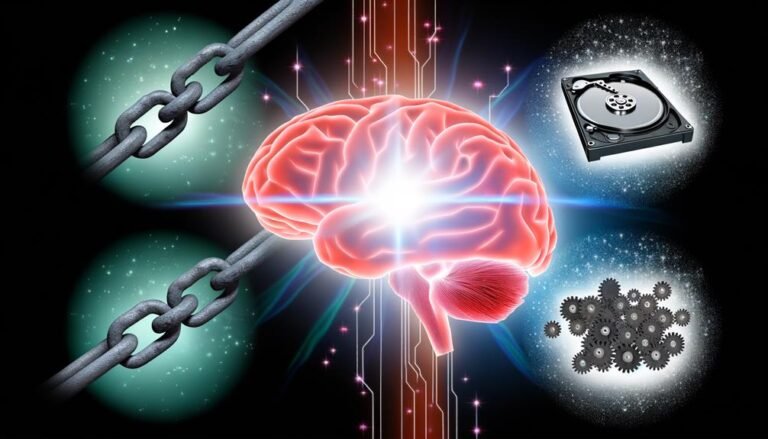What Is Microlearning?
In the realm of modern learning methodologies, microlearning has gained traction for its ability to deliver targeted knowledge in bite-sized formats.
By breaking down complex information into digestible units, organizations can enhance learning retention and engagement.
But what exactly makes microlearning stand out among traditional learning approaches?
Let's explore how this innovative technique revolutionizes the way we acquire knowledge and skills in today's fast-paced world.
Key Takeaways
- Short, focused learning units for quick consumption
- Increased engagement and retention rates
- Cost-effective and flexible training solution
- Supports continuous learning and job performance
Definition and Benefits of Microlearning
What are the key characteristics and advantages of microlearning in the realm of modern training and development practices?
Microlearning offers engagement strategies and retention techniques through its short, focused learning units. By delivering content in bite-sized portions typically lasting 3-5 minutes, learners are more likely to stay engaged and retain information effectively. This method not only increases engagement levels but also results in higher retention rates compared to traditional training methods.
Additionally, microlearning serves as a cost-effective training solution that is flexible, accessible, and supports continuous learning. By incorporating various formats such as videos, games, blogs, infographics, and quizzes, organizations can enhance learning experiences and align them with overall learning goals.
Examples and Delivery Methods
Exploring a variety of multimedia formats, microlearning offers diverse examples and delivery methods that cater to different learning preferences and objectives. Some popular delivery methods include:
- Video
- Self-paced e-learning
- Games
These methods enable learners to engage with content in interactive ways, enhancing their understanding and retention.
Additionally, infographic learning is gaining popularity for its visual appeal and ability to simplify complex information. By incorporating these methods into microlearning modules, organizations can create dynamic and effective learning experiences that resonate with modern learners.
Effectiveness of Microlearning
The effectiveness of microlearning lies in its ability to deliver learning content in small, focused chunks, enhancing information retention and catering to the rise of mobile technology and performance support in training environments. Microlearning's improved retention is reinforced by its technology-driven solutions. This approach allows learners to engage with the material in a more impactful way, increasing the likelihood of recalling information when needed. By leveraging technology-based training methods and adapting to the prevalence of mobile devices, microlearning aligns with the modern learner's preferences and lifestyles. This shift towards bite-sized, easily digestible content supports the need for quick access to knowledge and on-the-job performance support.
| Benefits of Microlearning | Explanation |
|---|---|
| Improved Retention | Enhanced information recall |
| Technology-Driven Solutions | Utilizing modern training methods |
Best Practices for Implementation
When implementing microlearning in organizations, adherence to best practices is crucial for maximizing effectiveness and achieving desired learning outcomes. To ensure successful implementation, consider the following best practices:
- Engagement strategies
- Incorporate gamification elements to make learning interactive and enjoyable.
- Utilize social learning platforms to facilitate collaboration and knowledge sharing.
- Implement personalized learning paths to cater to individual learning preferences.
- Technology integration
- Utilize a learning management system (LMS) to deliver and track microlearning modules.
- Explore mobile learning apps to provide on-the-go access to bite-sized learning content.
- Leverage analytics tools to gather insights on learner progress and engagement levels.
Organizational Implementation and Resources
Effective implementation of microlearning in organizations requires strategic alignment and accessible resources to support continuous learning initiatives. Enhancing productivity and integrating a learning culture are vital aspects of this process. Organizations should assess training needs, curate content, and empower professionals to develop talent effectively. Below is a table illustrating key resources and actions for successful organizational implementation of microlearning:
| Resources | Actions |
|---|---|
| Curated content | Assess training needs |
| Learning management system | Develop relevant content |
| Analytics tools | Integrate with existing systems |
Future Trends in Microlearning
Enhancing productivity and integrating a learning culture are essential factors in shaping the future trends of microlearning within organizations. As technology continues to advance, two key trends emerge:
- AI Integration: Incorporating artificial intelligence will enable personalized learning experiences by analyzing individual learner data and providing tailored content recommendations.
- Personalized Learning: Customizing learning paths based on individual preferences, strengths, and areas for improvement will enhance engagement and knowledge retention.
- Adaptive Learning Platforms: Utilizing adaptive learning platforms that adjust content delivery based on learner interactions and performance will further optimize the effectiveness of microlearning initiatives.
Conclusion
In conclusion, microlearning offers a promising approach to learning and development, with its concise, targeted modules and effective delivery methods. Despite its brevity, microlearning packs a powerful punch in enhancing knowledge retention and performance improvement.
As organizations continue to embrace this methodology, the future of learning is set to be revolutionized by these bite-sized chunks of information.






